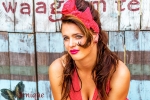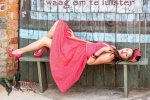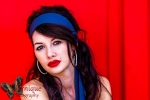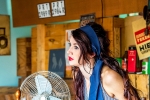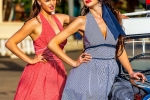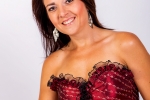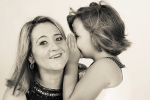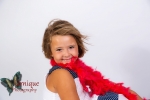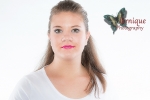Portrait photography or portraiture is photography of a person or group of people that displays the expression, personality, and mood of the subject. Like other types of portraiture, the focus of the photograph is usually the person’s face, although the entire body and the background or context may be included.
Lighting for Portraiture
When portrait photographs are composed and captured in a studio, the photographer has control over the lighting of the composition of the subject and can adjust direction and intensity of light. There are many ways to light a subject’s face, but there are several common lighting plans which are easy enough to describe.
Three-point lighting
One of the most basic lighting plans is called three-point lighting. This plan uses three (and sometimes four) lights to fully model (bring out details and the three-dimensionality of) the subject’s features. The three main lights used in this light plan are as follows:
Key-Light
Also called a main light, the key light is usually placed to one side of the subject’s face, between 30 and 60 degrees off center and a bit higher than eye level. The purpose of the Key-Light is to give shape (modelling) to a subject, typically a face. This relies on the first principle of lighting, white comes out of a plane and black goes back into a plane. The depth of shadow created by the Main-Light can be controlled with a Fill-Light.
Fill-in light
In modern photography, the fill-in light is used to control the contrast in the scene and is nearly always placed above the lens axis and is a large light source (think of the sky behind your head when taking a photograph). As the amount of light is less than the key-light (main-light), the fill acts by lifting the shadows only (particularly relevant in digital photography where the noise lives in the shadows). It is true to say that light bounces around a room and fills in the shadows but this does not mean that a fill-light should be placed opposite a key-light (main-light) and it does not soften shadows, it lifts them. The relative intensity (ratio) of the Key-light to the fill-light is most easily discussed in terms of “Stops” difference (where a Stop is a doubling or halving of the intensity of light). A 2 Stop reduction in intensity for the Fill-Light would be a typical start point to maintain dimensionality (modelling) in a portrait (head and shoulder) shot.
Accent-Light
Accent-lights serve the purpose of accentuating a subject. Typically an Accent-light will separate a subject from a background. Examples would be a light shining onto a subject’s hair to add a rim effect or shining onto a background to lift the tones of a background. There can be many accent lights in a shot, another example would be a spotlight on a handbag in a fashion shot. When used for separation, i.e. a hair-light, the light should not be more dominant than the main light for general use. Think in terms of a “Kiss of moonlight”, rather than a “Strike of lightning”, although there are no “shoulds” in photography and it is up to the photographer to decide on the authorship of their shot.
Kicker
A Kicker is a form of Accent-Light. Often used to give a backlit edge to a subject on the shadow side of the subject.
There are many different techniques for portrait photography. Often it is desirable to capture the subject’s eyes and face in sharp focus while allowing other less important elements to be rendered in a soft focus. At other times, portraits of individual features might be the focus of a composition such as the hands, eyes or part of the subject’s torso.
Styles of Portraiture
Often it is desirable to capture the subject’s eyes and face in sharp focus while allowing other less important elements to be rendered in a soft focus. At other times, portraits of individual features might be the focus of a composition such as the hands, eyes or part of the subject’s torso.
Additionally another style such as head shot has came out of the portraiture technique and has become a style on its own.
Approaches to Portraiture
There are essentially four approaches that can be taken in photographic portraiture — the constructionist, environmental, candid, and creative approach. Each has been used over time for different reasons be they technical, artistic or cultural. The constructionist approach is when the photographer in their portraiture constructs an idea around the portrait — happy family, romantic couple, trustworthy executive. It is the approach used in most studio and social photography. It is also used extensively in advertising and marketing when an idea has to be put across. The environmental approach depicts the subject in their environment be that a work, leisure, social or family one. They are often shown as doing something, a teacher in a classroom, an artist in a studio, a child in a playground. With the environmental approach more is revealed about the subject. Environmental pictures can have good historical and social significance as primary sources of information. The candid approach is where people are photographed without their knowledge going about their daily business. Whilst this approach taken by the paparazzi is criticized and frowned upon for obvious reasons, less invasive and exploitative candid photography has given the world superb and important images of people in various situations and places over the last century. The images of Parisians by Doisneau and Cartier-Bresson to name but two, demonstrate this. As with environmental photography, candid photography is important as a historical source of information about people. The creative approach is where digital manipulation (and formerly darkroom manipulation) is brought to bear to produce wonderful pictures of people. It is becoming a major form of portraiture as these techniques become more widely understood and used.
Click on the images below to view an enlarged single image.







